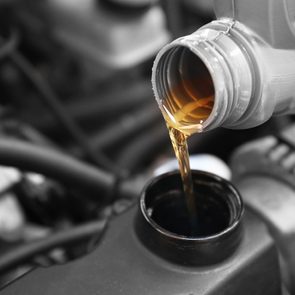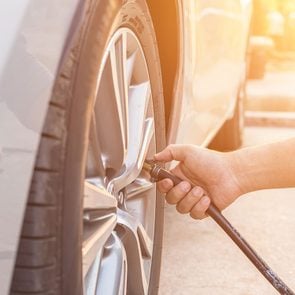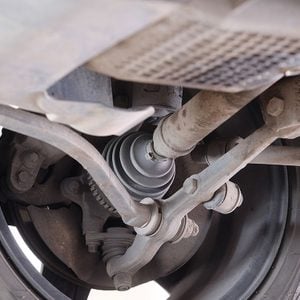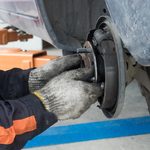7 Car Fluids To Check Right Now
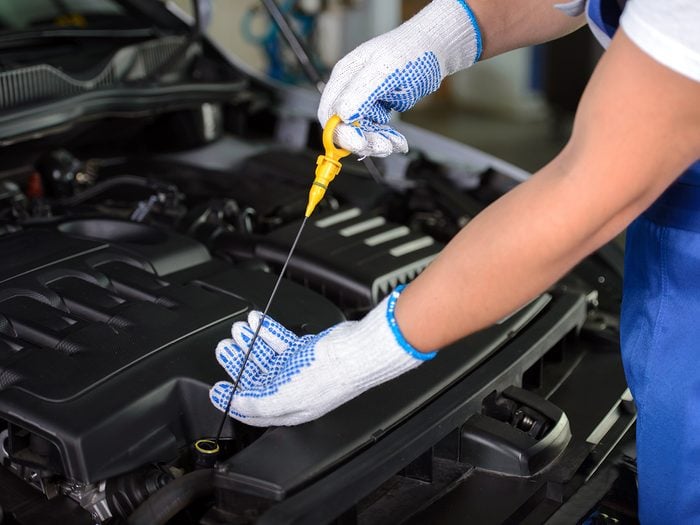
Harsh winter conditions are tough on your vehicle's fluids. Spring is a great time to check the fluids to keep your car running safely and smoothly.
Harsh winter conditions may cause your vehicle’s fluids to quickly break down. Spring is the perfect time to check those fluids and determine if they need to be topped off, changed or flushed.
Check all fluid levels while your car is on level ground. Vehicle fluids come in a rainbow of colours; all should be translucent and free from rust, dirt, sludge and debris. Use a clean white paper towel when checking fluids to see if they are dirty and need to be changed, or contaminated and need to be flushed.
Take care not to overfill fluids and only use new fluids from unopened bottles. (Spring is an excellent time to bring open fluid bottles to your local recycling centre.) A funnel may make it easier to add fluids, but be sure it’s completely clean and free of dust, grime or other fluids. Check the owner’s manual to locate fluid reservoirs, the correct fluid types and fluid level specifications for your vehicle’s make, model and year.
These are the fluids to check:
Motor Oil
If your engine oil is yellowish to light brown, but low, you can top it off with fresh oil from a sealed bottle. (Here’s the right way to pour oil.) However, if it’s thick, black or gritty, it’s time to change the oil and filter. Even if you didn’t drive a lot during the winter, spring is a good time to do this. Performing a DIY oil change following a bitterly cold winter can extend an engine’s life.
Windshield Washer Fluid
Remove the washer fluid reservoir cap and check for dirt or muck. Use a garden hose to flush the reservoir if necessary. Check the reservoir for leaks or cracks. Fill with premixed windshield washer fluid and test the washers (front and rear) to make sure they work properly.
Coolant
When the engine is cool, remove the radiator and coolant reservoir tank caps. If the coolant is clean, but low, add only a 50/50 mix of anti-freeze and water to the reservoir’s “Full Cold” mark. If the coolant is murky, or if there’s rust buildup in the radiator, the reservoir tank or under the radiator cap, your coolant system needs flushing. Flushing the coolant system is a simple DIY project.
Brake Fluid
Remove the master cylinder reservoir cap. The brake fluid should be a clear yellowish to light brown. If the fluid is dirty, or the reservoir cap gasket is mushy, it’s time to have your repair shop flush and replace the brake fluid and reservoir cap gasket. If the fluid is low, add only clean fresh fluid to the reservoir fill mark. If the brake fluid is really low, have your mechanic check for leaks.
Power Steering Fluid (PSF)
The power steering dipstick is usually connected to the reservoir cap. Some power steering reservoirs are transparent and have fluid level indicators on the outside.
Check the PSF level when the engine is cool. If low, fill only to the “Cold” full mark. Overfilling the PSF will cause the reservoir to leak when the fluid heats up. Black or dark-brown fluid should be flushed by your repair shop to prevent premature part failure. (Find out the surprising ways you’re shortening the life of your car.)
Automatic Transmission Fluid (ATF)
Check ATF fluid at operating temperature with the engine running. Remove the dipstick and wipe clean, then reinsert to check the fluid level. If the ATF is a light red/pinkish colour, but low, you can top it off with fresh ATF. If it’s deep red to dark brown, have your mechanic change the fluid and filter.
NMF Battery Fluid
Spring is the ideal time to check the battery fluid in non-maintenance-free batteries (NMF). If you have a NMF battery, check the water fluid levels and fill only with distilled water if low. (Here’s more advice on how to extend the life of your car battery.)
Note: Four-wheel, all-wheel drive (transfer case) and rear drive (differential case) vehicles have fluids that need to be checked from underneath the vehicle. You can DIY if you’re handy, or have a professional do it for you.
Next, check out the ultimate car maintenance schedule.
